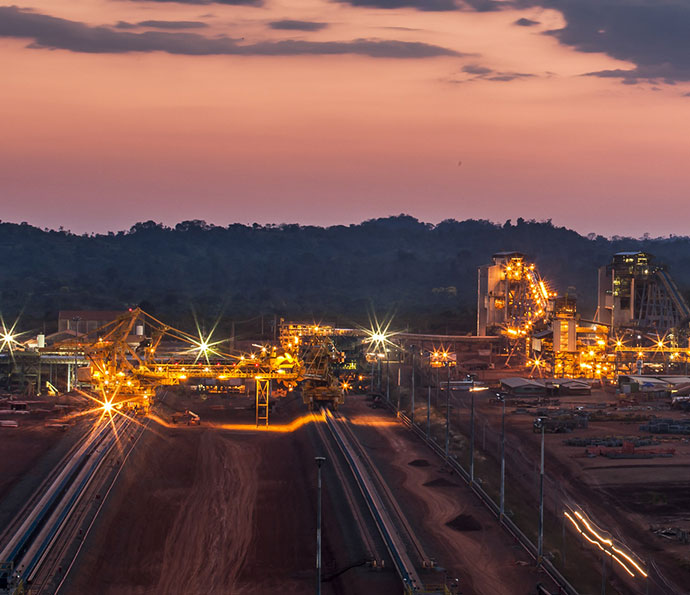Vale, in partnership with Chemtech, is implementing a new management system for iron and manganese ore units of the company in Brazil, replacing 17 other systems that were being used. Overall, 38 mines, plants and warehouses will have the new system, called Vale Production Management – Mining (GPV-M). The implementation has been completed in 20 units of Minas Gerais, Maranhão and Pará. This initiative will provide more than $70 million in savings until 2020.
GPV-M started being developed in 2014 by the Information Technology and Ferrous areas in partnership with Chemtech, a Siemens Group company. Its implementation began in October 2016. It is part of the unique technological platform of supply chain management of the ferrous business – comprising mine, railroad and port – and encompasses the entire production process, from the mine and processing to shipping the product.
The change brings three major financial gains. One is the reduction of the IT cost with maintenance and evolution of different systems and platforms, which represents $19 million savings up to 2020. The second gain is the avoided cost to business due to the reduction of operational impacts caused by system downtime. And lastly, relevant gains are expected with more labour productivity and reduction of unproductive hours of the assets, supported by improved usability of the system and greater availability of information for decision-making. These two operational gains are estimated in $53 million in the same period.
The shorter downtime (in which the system is “offline”) is the result of more modern and robust technology of GPV-M compared to older systems. The increase of agility and reduction of unproductive hours are obtained by the higher level of integration with automation systems that provide immediate and reliable data, besides requiring less manual work (with typing, for example) and being more intuitive for operators.
Another great advantage of adopting a single system is that it allows the standardisation of concepts and indicators in the different units of the company. The whole operational expertise of these units will be gathered into a digital database, facilitating the replication of best practices and internal benchmarking, making the decision-making process more dynamic and competitive.
“Over the years Vale has acquired several companies and each one adopted its own system. For the first time we are standardising all these systems,” explains Jonas Chagas, Project Manager. “Now we can compare more easily the performance of our units, thus identifying process improvement points to enable increased productivity,” added Marcelo Baltar, Ferrous Information Manager.
GPV-M is capable of processing 1.2 terabytes of information in real time and meet thousand concurrent users. Since it began to be deployed, the system has already been used by a thousand different users, with simultaneous access of 150 users. Because the system is intellectual property of Vale, it will be possible to keep extending the solution in the future and developing new functions from the analysis of the data generated and other technologies.
The implementation of GPV-M is in line with the Ferrous area policy to reduce costs and optimise the margin from increased productivity. “GPV-M is one of the foundations of our digital strategy, which aims to establish a platform that will allow Vale to reach new heights of productivity through a combination of new technologies and processes,” says Janio Souza, IT Innovation Manager.
Vale says it is investing in information technology to become a more simple, efficient and competitive company in the mining industry. The initiatives aim to integrate the company globally, reduce costs, simplify processes, and impact the business strategically, in order to further increase the company’s productivity level and make it achieve the best health and safety indices.
The company is deploying intelligent systems for the planning of the supply chain; Industrial IT solutions, such as fuel and fleet management systems; advanced data analysis, in order to foresee problems, anticipate equipment failures, and influence decision-making; and mobility solutions, such as mobile applications that revolutionise the decision-making of supervisors in operations, besides streamlining processes across the company.











